For a list of common keyboard shortcuts you can use on your computer, see our guide How to use common keyboard shortcuts in macOS 13 Ventura.
Short guide:
- Click the Apple icon
 in the top-left corner of the screen and select System Settings.
in the top-left corner of the screen and select System Settings. - Click Accessibility in the sidebar.
- Select Keyboard from the list of Accessibilty options.
- Turn on the toggle switch for Sticky Keys.
- Click the i button
 to open Sticky Keys settings.
to open Sticky Keys settings.
Before and after
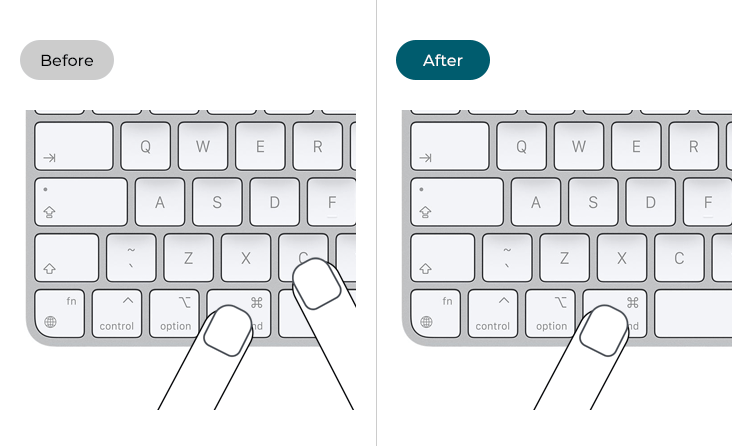
This section gives you step by step instructions on how to enable Sticky Keys in macOS 13 Ventura, with pictures of the screens to help.
Open System Settings
1. Click the Apple icon ![]() in the top left corner of the screen and choose System Settings from the menu.
in the top left corner of the screen and choose System Settings from the menu.
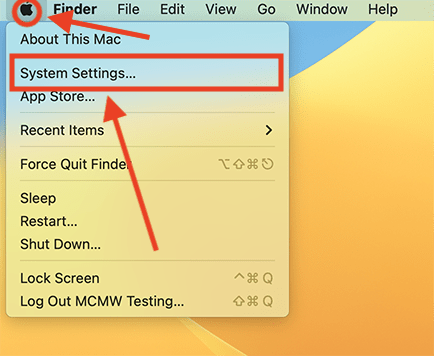
Open the Accessibility settings
2. In the System Settings window, click Accessibility in the sidebar.
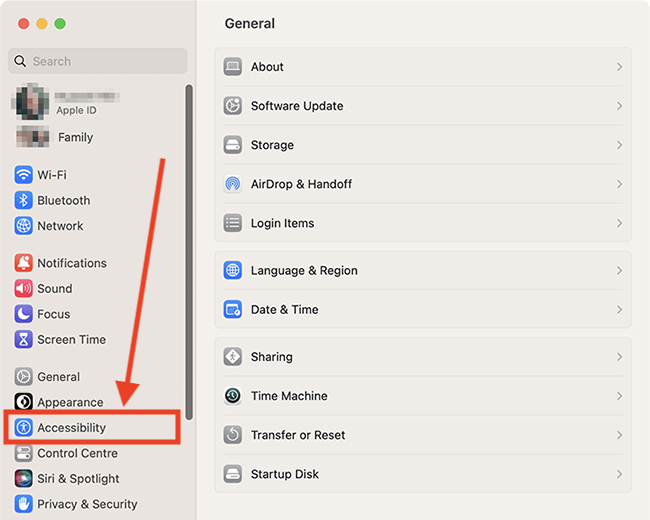
Find the Keyboard hardware settings
3. Select Keyboard from the list of Accessibilty options on the right.
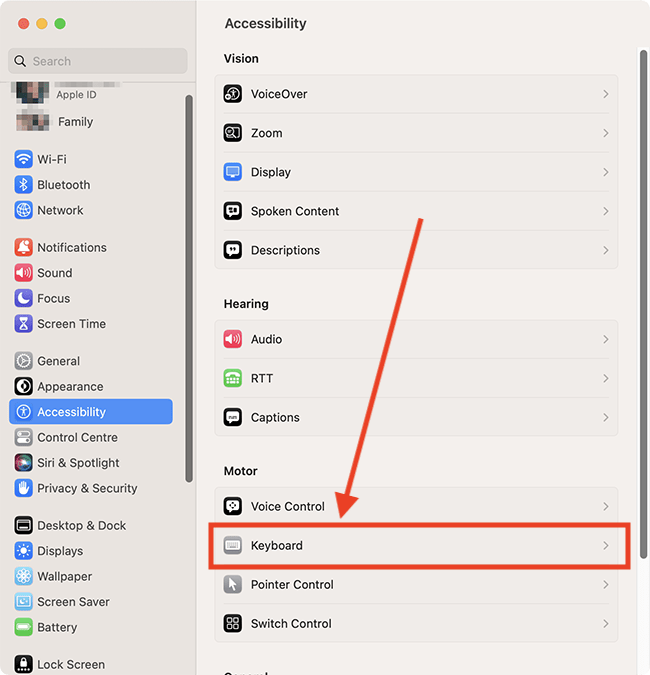
Turn on Sticky Keys
4. Click the toggle switch for Sticky Keys to turn it on.
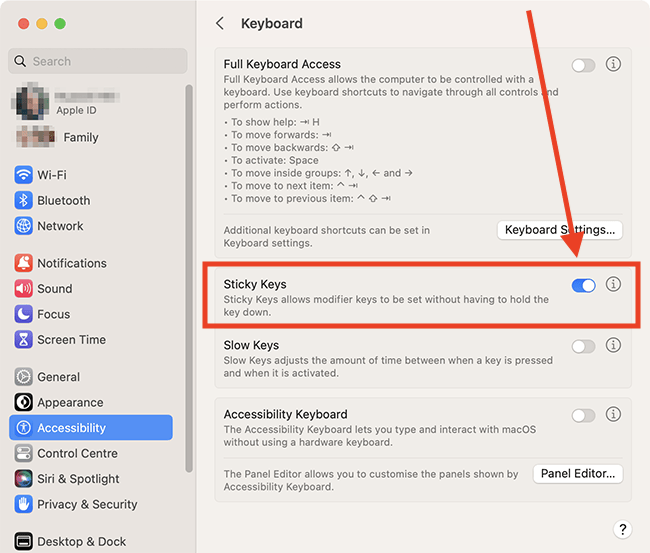
Customise Sticky Keys
5. Click the i (show detail) button ![]() next to the toggle switch.
next to the toggle switch.
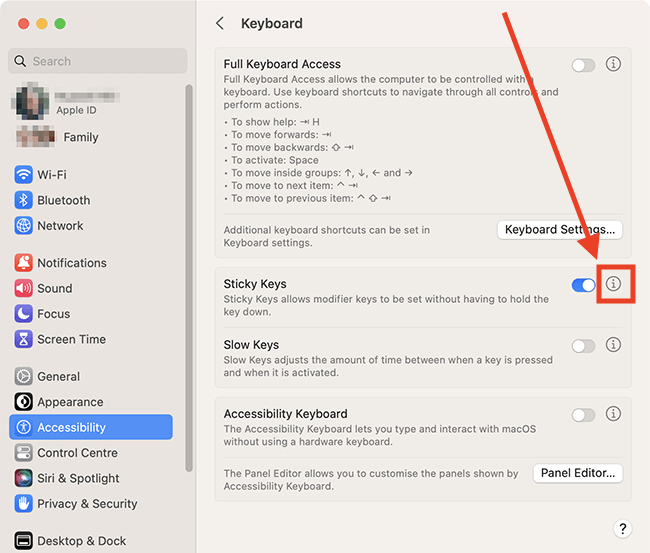
Turn on Sticky Keys using the Shift key
6. If you want to be able to turn Sticky Keys on and off using the Shift key, click the toggle switch for Press the Shift key five times to toggle Sticky Keys to turn it on.
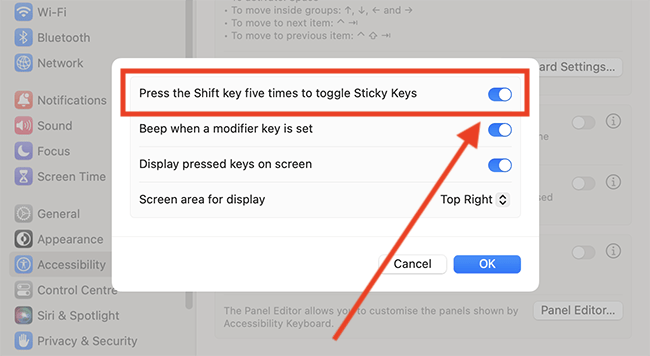
Hear a sound when a modifier key is pressed
7. If you want to hear a sound when a modifier key (Cmd, Alt, Shift, Ctrl) is pressed, click the toggle switch for Beep when a modifier key is set to turn it on.
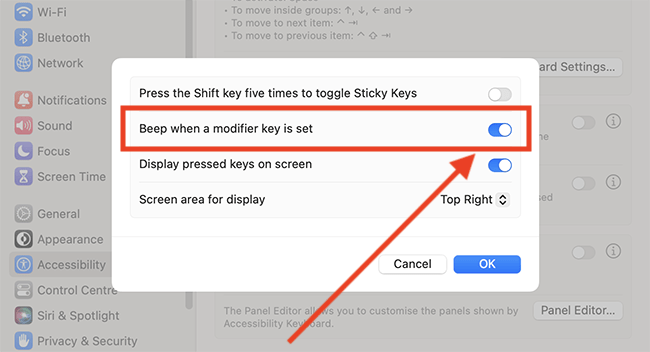
Display which modifier keys have been pressed
8. If you want to see a notification of which modifier keys have been pressed, click the toggle switch for Display pressed keys on screen to turn it on.
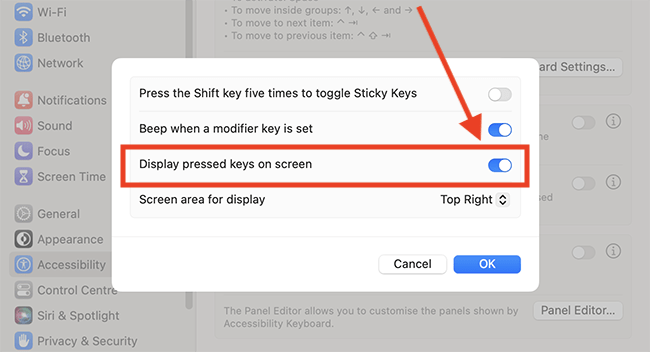
Choose where to display the modifier key notifications
9. You can display the modifier key notifications in any corner of the screen. Click the drop-down menu for Screen area for display and choose the corner you would like to use

Save your changes
10. When you are happy with your settings, click the OK button to save your changes.
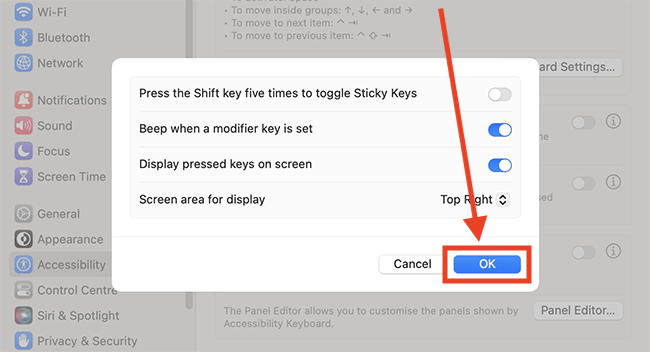
Close System Settings
7. When you are happy with your settings, close System Settings by clicking the Close button (red circle) in the top-left corner of the window or using the Cmd + W keyboard shortcut.
Using Sticky Keys
6. To use Sticky Keys, press the keys for the required shortcut, one after the other.
To keep any of the modifier keys (Cmd, Alt, Shift, Ctrl) ‘pressed’, press it twice. To ‘un-press’ a key, press it a third time.
The on-screen indicator will show which modifier keys have been pressed. If a key has been pressed once, the icon will be grey. If a key has been pressed twice, the icon will be white.
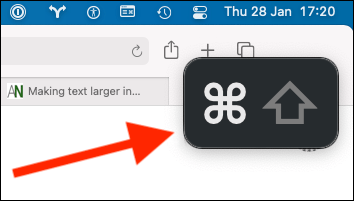
Note: If this does not work it could be because your computer settings are managed by someone else (an IT department or administrator for example). If so, you will need to contact them to access these settings or for help.